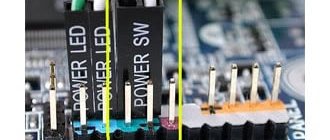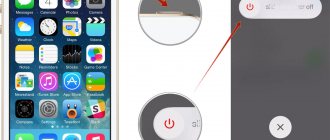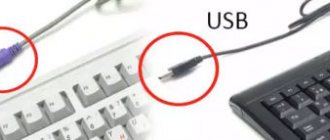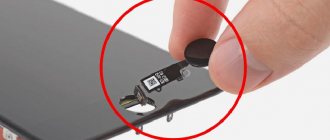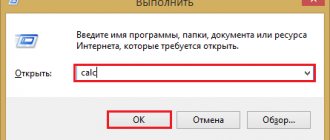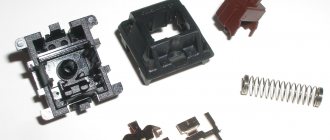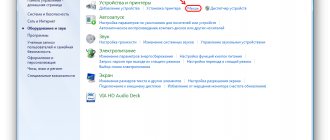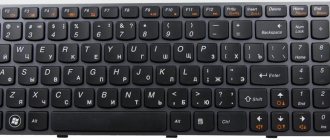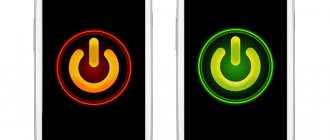Modern models of mobile gadgets produced have large and functional displays. The size of the device itself remains the same by reducing the bezels around the screen itself. Using such a device is not always convenient. Developers are trying to improve old and develop new navigation tools. These include a multifunctional circle on the display. Smartphone users should understand what it is for and how to remove it from the main screen if necessary.
What is the circle on the phone screen for?
As a rule, the interactive circle is implemented into gadgets by smartphone manufacturers Honor and Huawei . Sometimes, such navigation can be found in other cell phone models.
The circle includes several convenient tools for comfortable use of the device.
Moving is possible through various clicks, it all depends on their duration:
- when pressed briefly, the user returns to the previous menu;
- to go to the desktop, the circle should be held for a couple of seconds;
- When you hold the circle and slide it to the side, information on running applications opens.
The navigation control principle can be changed through a special settings section.
Sonim XP6
Sonim XP6 is positioned as an armored push-button phone on Android. The protective properties of its coating are truly stunning - the likelihood of breaking the gadget is very small, and even then you have to try hard to do it.
However, due to safety, the appearance was omitted - it is difficult to call it elegant, rather practical. The monitor, for example, by modern standards, when smartphones tend to be the size of tablets and the display takes up almost the entire space, in the Sonim XP6 is almost microscopic.
OS Android 4.4, 4 processor cores, gigabytes of RAM and 8 built-in. We haven’t heard anything from the manufacturer about expanding the volume using MicroSD.
Sonim XP6 has Wi-Fi support, Bluetooth and a 5-megapixel camera: such characteristics are not surprising; the device has another advantage - a battery capacity of 4800 mAh. Not even all laptops have this value, let alone phones.
And of course, the armor, which was announced at the very beginning: it is made according to military standards, the device can withstand temperatures down to minus twenty and plus fifty-five, a fall from a two-meter height or a dive to a two-meter depth under water.
How to remove a circle from the Android screen
The circle on the Android screen is a navigation button, which is quite easy to control - switch it on and off using the settings. But if a circle suddenly appeared on the screen, it means that somehow it turned on. All that remains is to figure out how to turn it off.
Find the settings section in the menu, click on it and open the “system” section.
This is where the system navigation bar is located.
Next, you need to find the “Navigation Button” subsection and tap on it. The circle will immediately disappear from the screen.
Samsung W2014
Samsung W2014 is a push-button Android phone in the form of a clamshell. Those who like to be nostalgic for the old days will definitely like it. However, the contents of this clamshell will please even the most inveterate skeptics who claim that push-button mobile phones on Android are a failure in the touchscreen smartphone market.
Today, Samsung W2014 is the most powerful device among smart phones with buttons. 1.4 GHz quad-core processor, one gigabyte of RAM, thirteen megapixel cameras (and considering that the manufacturer is Samsung, it’s easy to guess that the pictures will be high-quality), 4 GB of native memory + up to 64 GB from MicroSD (if desired), two full-size screens , Wi-Fi support and, of course, Android 4.3 OS.
How to customize the bottom buttons on Android
Correctly setting up the navigation bar allows you to add additional keys and reprogram actions.
Configuration can really help if the buttons at the bottom of the screen are missing on the gadget.
To understand how to swap the lower buttons, you should first find out which functionality the user most often resorts to when using his phone.
To begin with, you can change the assignment of the keys by using standard functionality or changing their appearance. Alternatively, they can be removed through third-party programs.
LG Optimus F3Q
Released at the beginning of 2014, the LQ Optimus F3Q combined business with pleasure. Or, in other words, it became a clear example of the “two-in-one” model. On the one hand, this is a push-button phone on Android, on the other, it has a retractable keyboard, so it also has a touch screen, and a full-size one, everything is as it should be.
The LQ Optimus F3Q has good characteristics: a dual-core 1.2 GHz processor, 1 GB of RAM and four built-in cameras (a five-megapixel main one and a 0.3-megapixel front one). All this comes with only one, but very significant drawback for the domestic buyer - the smartphone is sold only abroad and is intended only for foreign telecom operators. However, for those who often go on business trips to other countries, it can be a real find.
How to swap buttons
The good thing about on-screen buttons is that they can be swapped and reassigned. At the same time, the procedure itself is much simpler than when working with analog keys. The process can be considered in more detail using the example of Huawei and Honor phones, but the instructions are also applicable to other models of mobile devices.
The procedure is as follows:
- In the gadget menu, go to the settings (parameters) section;
- go to configuration;
- select a navigation system and go to settings;
- choose the most convenient combination of keys;
- save all changes made.
Different models of mobile devices have their own sections and items that differ only in name, while their location in the menu is almost identical. If they have trouble finding them, the user can quickly use the built-in search engine by entering a single keyword, such as “navigation” or “keys.” After searching, the appropriate option is selected. Buttons can also be changed in the standard settings of certain phone models.
Samsung Galaxy Chat
Samsung Galaxy Chat is another push-button model from. Those who are interested in whether there are push-button phones on Android should definitely pay attention to it.
Smartphone with Android 4.0 OS. is no longer a new product, and therefore its filling is somewhat inferior to the recently released models, but at the same time, it would be hard to call it simple either. 3-inch QVGA screen, extended QWERTY keyboard - Galaxy Chat looks quite presentable. A two-megapixel camera, an 800 MHz processor, 4 GB of its own memory + the ability to use memory cards, a standard set of communication modules - all this at an affordable price pleases buyers.
How to disable onscreen buttons on your phone
Some users are interested in the question of how to hide the navigation buttons on their phone. Everything here is quite simple, the main thing is to follow the entire sequence of actions.
To begin with, you need to understand that control buttons can be divided into mechanical and software. The first option is located on the phone body, these include the power button, volume switch and, in some phone models, the home button. The second version of the buttons is virtual and is located on the device screen; control occurs by pressing your finger on the display. The type of buttons will depend on the Android model.
You can remove virtual buttons using the “ful!screen” program. This program is notable for the fact that it hides buttons in places where other programs cannot cope. In addition, these buttons are given an alternative replacement - two side translucent buttons are configured for “back” and “home” actions. There remains support for regular press, long press and swipe - that is, three actions for each button. Ful!screen can be considered a better program for hiding on-screen buttons.
Users can also try the Tablet Bar Hide and No System Bar programs.
If hiding is done through the phone menu, the user will need:
- unlock the gadget;
- go to the main menu and select the settings section;
- find items that meet the queries - system and system navigation;
- go to the location of the navigation buttons;
- Set the slider shown on the screen to the activation state - “hide navigation keys”.
Alternatively, you can use the “GMD Full Screen Immersive Mode” program - it allows you to not only hide the operating system navigation bar, but also start functioning with similar settings in user applications.
The main advantage of this program is that there is no need to obtain administrator rights to work in the system. All that is required from the user is to enter the program and set it to autoload.
Question to an expert
How does the navigation button work?
Control using the circle is quite simple and allows you to perform the same actions as using the three navigation buttons located at the bottom of the screen. When placing a circle by simply dragging it to any place on the screen, you can perform a number of different actions - a quick press triggers the “back” command, a long hold will go to the main menu, etc. Many users like this type of control, since everything is done with just one button.
What to do if the Home button on your device disappears?
The disappearance of the “Home” button from the device screen is a fairly common problem that users of mobile gadgets may encounter. However, there are no particular problems with its restoration. It is important to figure out the reason for her disappearance. Perhaps some changes have been made to the settings. In this case, you should go to the “parameters” section and return everything to its place or reassign the navigation keys. The disappearance of a button may also be due to an operating system error caused by a failure when flashing the device’s firmware. It is recommended to reflash the device again with a new and stable version of the OS or try to perform a full reset to factory settings.
4.2 / 5 ( 21 voice )
BlackBerry Priv
Of course, the BlackBerry Priv is a smartphone, even one based on the Android OS, which is unusual for a BlackBerry. However, we are still adding this device to our review because it has no analogues. Why?
First of all, because the device has a qwerty keyboard, which many users still adore. Secondly, BlackBerry Priv is created in a slider format, that is, the keyboard is retractable! Of course, this is a flagship device with a powerful processor, 3 GB of RAM, a cool 5.43-inch screen, a powerful battery, etc. In a word - a thing, although not cheap.
- Screen diagonal: 5.43 inches
- Screen resolution: 2560×1440
- Weight: 192 g
- Number of SIM cards: 1
- Processor: Qualcomm Snapdragon 808
- Memory capacity: 32 GB
- RAM capacity: 3 GB
- Battery capacity: 3410 mAh
- Camera: 18 MP
- Memory card support: yes
- Support for 4G networks: yes
